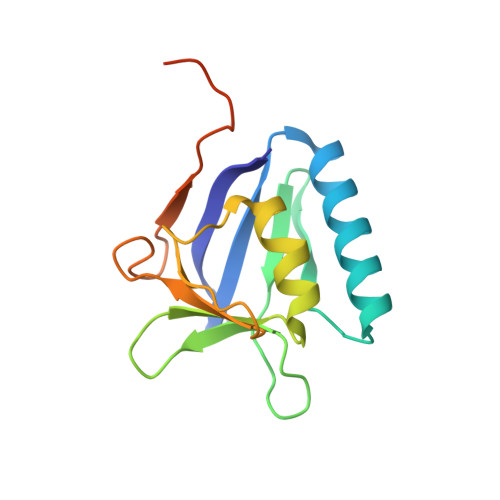Structure of the Legionella Effector, lpg1496, Suggests a Role in Nucleotide Metabolism.
Wong, K., Kozlov, G., Zhang, Y., Gehring, K.(2015) J Biol Chem 290: 24727-24737
- PubMed: 26294765
- DOI: https://doi.org/10.1074/jbc.M115.671263
- Primary Citation of Related Structures:
5BTW, 5BTX, 5BTY, 5BTZ, 5BU0, 5BU1 - PubMed Abstract:
Pathogenic Gram-negative bacteria use specialized secretion systems that translocate bacterial proteins, termed effectors, directly into host cells where they interact with host proteins and biochemical processes for the benefit of the pathogen. lpg1496 is a previously uncharacterized effector of Legionella pneumophila, the causative agent of Legionnaires disease. Here, we crystallized three nucleotide binding domains from lpg1496. The C-terminal domain, which is conserved among the SidE family of effectors, is formed of two largely α-helical lobes with a nucleotide binding cleft. A structural homology search has shown similarity to phosphodiesterases involved in cleavage of cyclic nucleotides. We have also crystallized a novel domain that occurs twice in the N-terminal half of the protein that we term the KLAMP domain due to the presence of homologous domains in bacterial histidine kinase-like ATP binding region-containing proteins and S-adenosylmethionine-dependent methyltransferase proteins. Both KLAMP structures are very similar but selectively bind 3',5'-cAMP and ADP. A co-crystal of the KLAMP1 domain with 3',5'-cAMP reveals the contribution of Tyr-61 and Tyr-69 that produces π-stacking interactions with the adenine ring of the nucleotide. Our study provides the first structural insights into two novel nucleotide binding domains associated with bacterial virulence.
Organizational Affiliation:
From the Department of Biochemistry and Groupe de Recherche Axé sur la Structure des Protéines, McGill University, Montreal, Quebec H3G 0B1, Canada.














